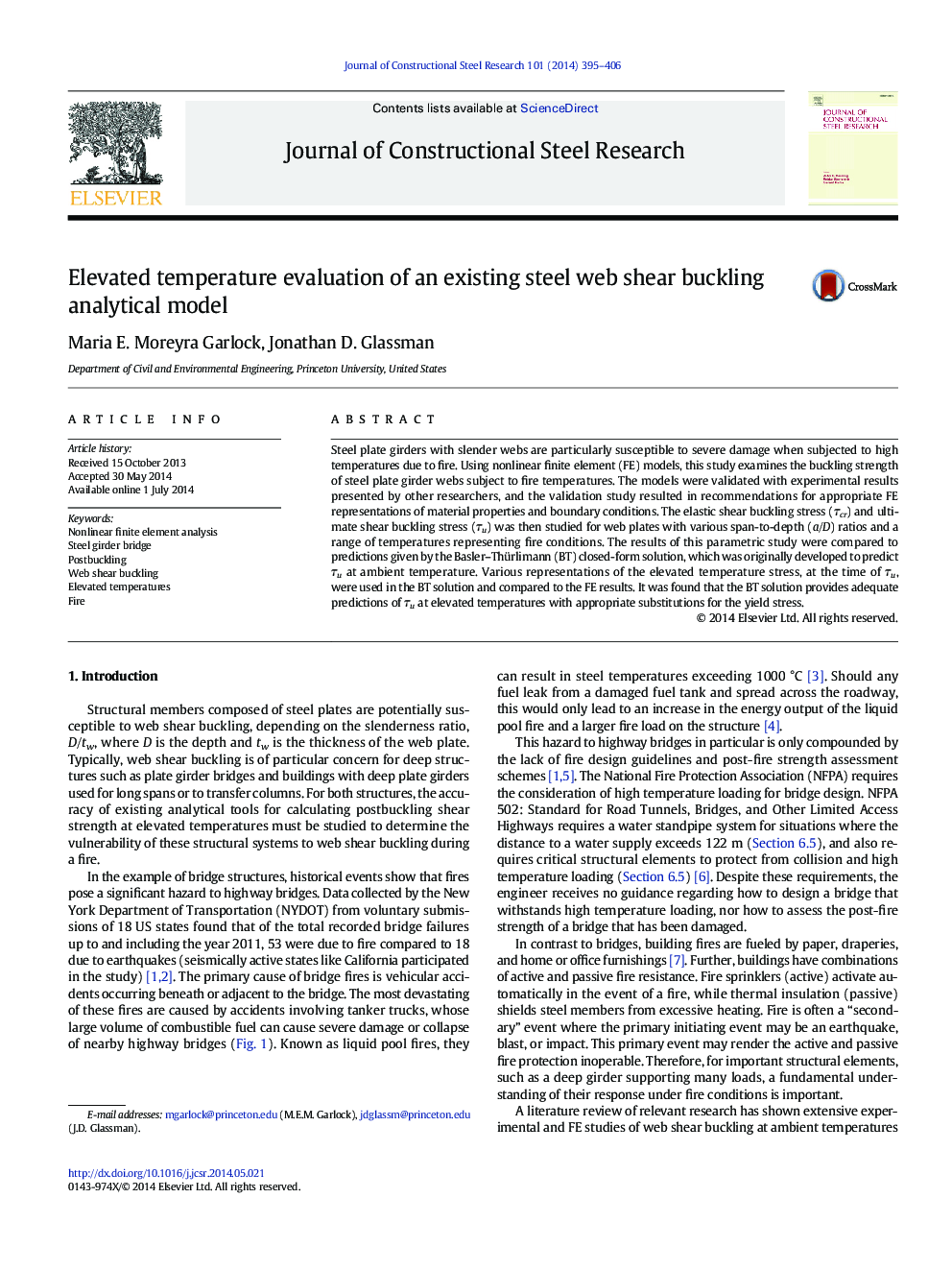| Article ID | Journal | Published Year | Pages | File Type |
|---|---|---|---|---|
| 284669 | Journal of Constructional Steel Research | 2014 | 12 Pages |
•Nonlinear material effects should be included for temperatures exceeding 100 °C.•Monte Carlo results show variability of ultimate strength with material properties.•Yield stress in the tension field is not always reached, contrary to theory.•Substitutions suggested for better agreement of the analytical and FE models
Steel plate girders with slender webs are particularly susceptible to severe damage when subjected to high temperatures due to fire. Using nonlinear finite element (FE) models, this study examines the buckling strength of steel plate girder webs subject to fire temperatures. The models were validated with experimental results presented by other researchers, and the validation study resulted in recommendations for appropriate FE representations of material properties and boundary conditions. The elastic shear buckling stress (τcr) and ultimate shear buckling stress (τu) was then studied for web plates with various span-to-depth (a/D) ratios and a range of temperatures representing fire conditions. The results of this parametric study were compared to predictions given by the Basler–Thürlimann (BT) closed-form solution, which was originally developed to predict τu at ambient temperature. Various representations of the elevated temperature stress, at the time of τu, were used in the BT solution and compared to the FE results. It was found that the BT solution provides adequate predictions of τu at elevated temperatures with appropriate substitutions for the yield stress.
